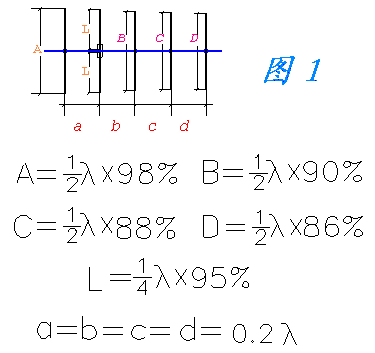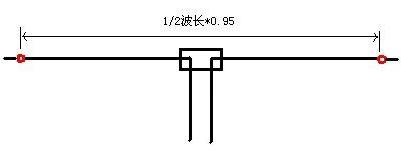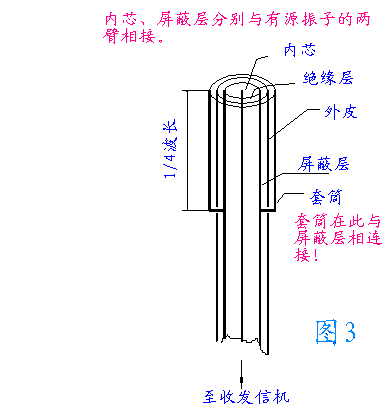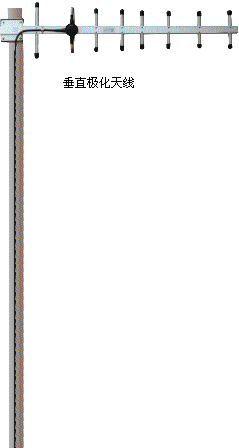'+ data.data.username +' '; dom + ='
The Yagi antenna is a directional antenna. It consists of an active vibrator and multiple passive vibrators placed on the same plane and perpendicular to the metal rod connecting their centers. Generally, one passive oscillator is a reflector, and the remaining passive oscillators are directors. Because the metal rod passes through the voltage wave node on the vibrator and is perpendicular to the antenna, the metal rod has little effect on the near field of the antenna. The active vibrator must be insulated from the metal rod.
As can be seen from the data in the table below, the gain of the Yagi antenna is higher than that of the vertical antenna and dipole antenna. (From "Antenna Radio Wave Propagation", edited by Xu Kunsheng and Jiang Zhongyong of Northern Jiaotong University)
Antenna form Number of reflectors Number of directors Number of active elements Directivity coefficient
Dipole 0 0 1 0 dB
Two units Yagi 1 0 1 3 ~ 4.5dB
Two units Yagi 0 0 1 3 ~ 4.5dB
Three units Yagi 1 1 16 ~ 8dB
Four units Yagi 1 2 1 7 ~ 10dB
Five units Yagi 1 3 1 9 ~ 11dB
As can be seen from the table above, the more Yagi antenna units, the stronger the directivity. But the increase of the unit is not proportional to the directivity. When there are too many units, the operating frequency band will be narrowed, and the size of the entire antenna will be too large.
In the short wave band, the wavelength is longer, and it is more difficult to make a Yagi antenna. In the ultra-short wave band (V / U), because the wavelength is short, it is easier to make a low-cost Yagi antenna.
The mathematical calculation of Yagi antenna is complicated (I feel dizzy when I encounter mathematical derivation), but many engineering or theory books give its size, as long as you follow these data, you can make a good pair of YAGI!
The dimensions of the five-unit Yagi antenna are shown in Figure 1. 
If you make a four-unit Yagi antenna, as long as the director D is not installed, the antenna will also look smaller. If you want to make seven units, add two director units on the basis of the above picture, the length is 84% and 82% of the half wavelength respectively. The interval of the newly added units is still 0.2 times the wavelength.
The Yagi antenna I made in the 70CM band was originally a four-element unit. Each vibrator and its connected metal rod were made of copper electrodes (2.5 mm diameter) provided by BG4RUV. About a month later, I bought a 2-meter-long copper bar with a diameter of 4 mm, and made a detachable four-unit Yagi antenna (a rectangular copper tube was found as a pole connecting each vibrator, and each vibrator was screwed and The pole is fixed, easy to carry). The resonance point of the first antenna is about 2 MHz lower than the predicted center frequency (435 MHz), but the SWR within 430 to 440 MHz is not high, the lowest SWR is less than 1.1, and the highest SWR is not greater than 1. 4. The SWR of the second antenna has little fluctuation in the entire 70CM frequency band, with a maximum of about 1.2. Later, I made some changes to this detachable antenna and used the remaining materials to make three primers, so that my antenna can be assembled into a four-unit Yagi antenna or a seven-unit Yagi antenna.
If you want to make a Yagi antenna, but do not require strong directivity, you can try to make a three-unit Yagi antenna. The dimensions are given here (Figure 2). 

Follow WeChat

Download Audiophile APP

Follow the audiophile class
related suggestion
Commonly used short wave antennas are mainly divided into 3 categories, the first category is vertical antenna (GP), the second category is even-level antenna (DP), and the third category is Yagi antenna (Y ...

The story made by the engineer: The whole process of Niuren's homemade WIFI Shuangling antenna. This production refers to the drawings collected on the Internet. It is said that there is a gain of about 11DB ...

This production refers to the drawings collected online. It is said that there is a gain of about 11DB, and the test is indeed true after completion.

The distance between the feeding ends of the active elements of the antenna is about 5-10 mm. I did not add "ping ...


[Wei Bing] As the popularity of the V / U band increases, homemade Yagi antennas have become a hot topic again. ...
![[Photo] FM three-unit Yagi antenna production](http://i.bosscdn.com/blog/20/06/41/5211012552.jpg)

Privacy statement: Your privacy is very important to Us. Our company promises not to disclose your personal information to any external company with out your explicit permission.

Fill in more information so that we can get in touch with you faster
Privacy statement: Your privacy is very important to Us. Our company promises not to disclose your personal information to any external company with out your explicit permission.